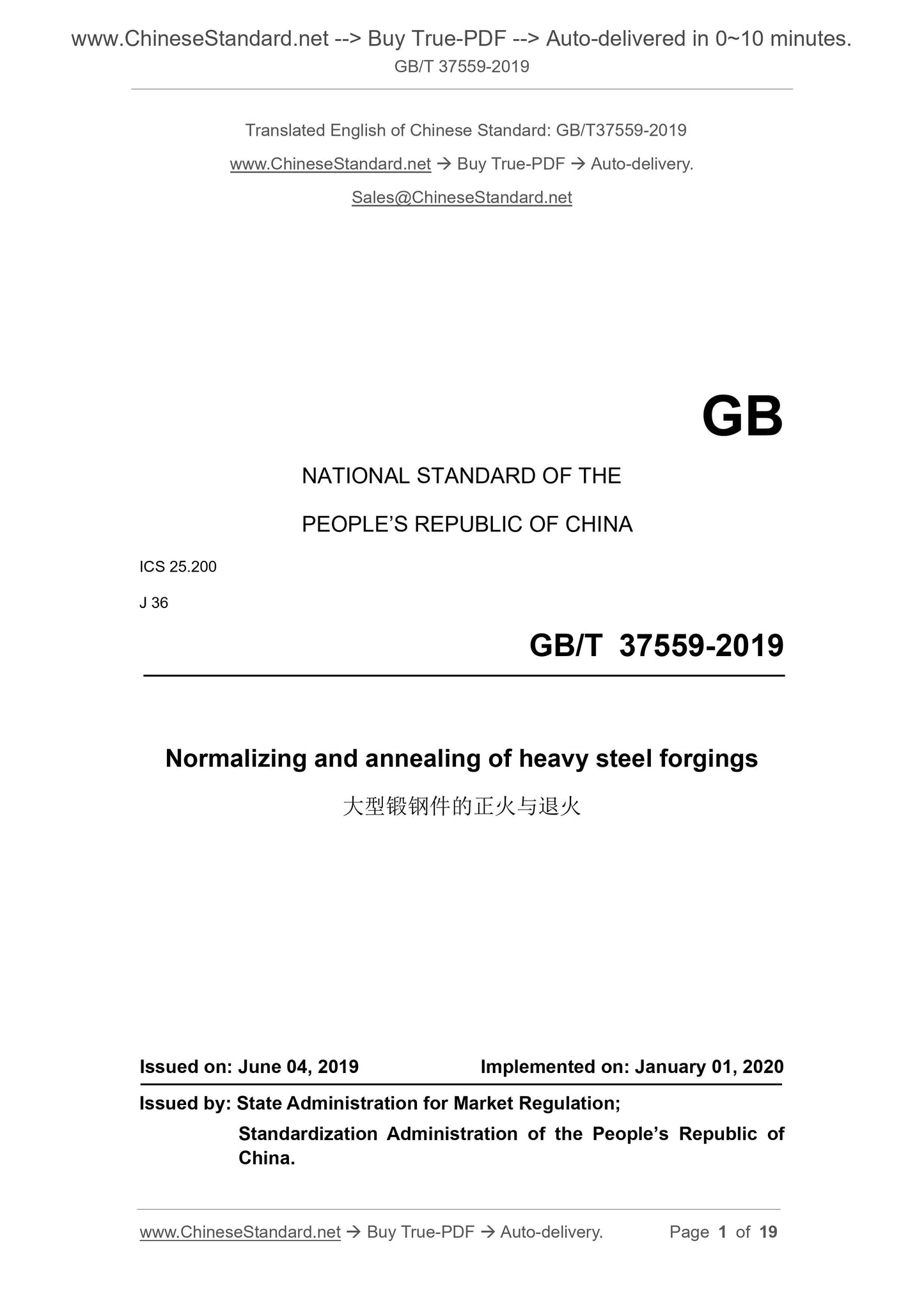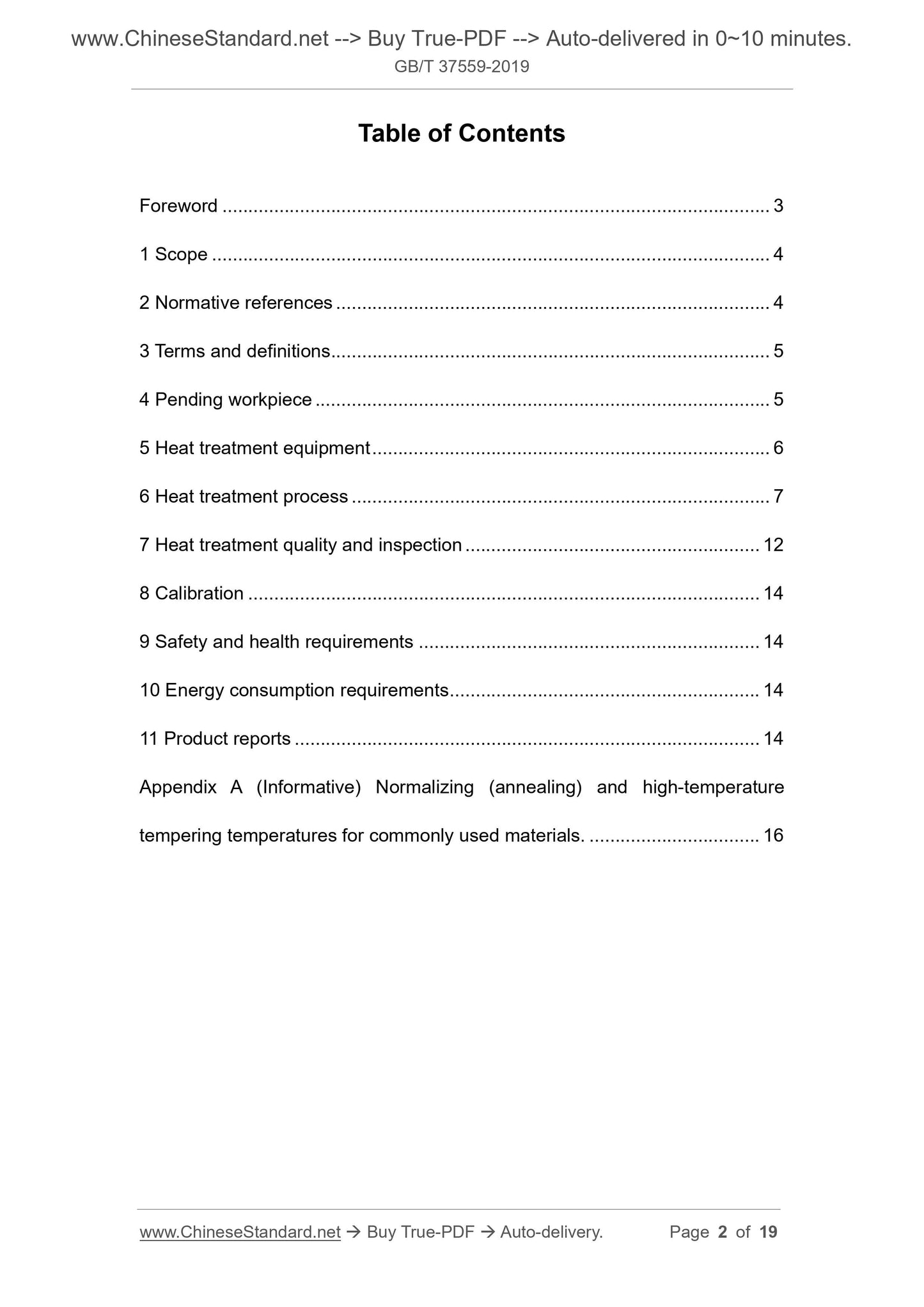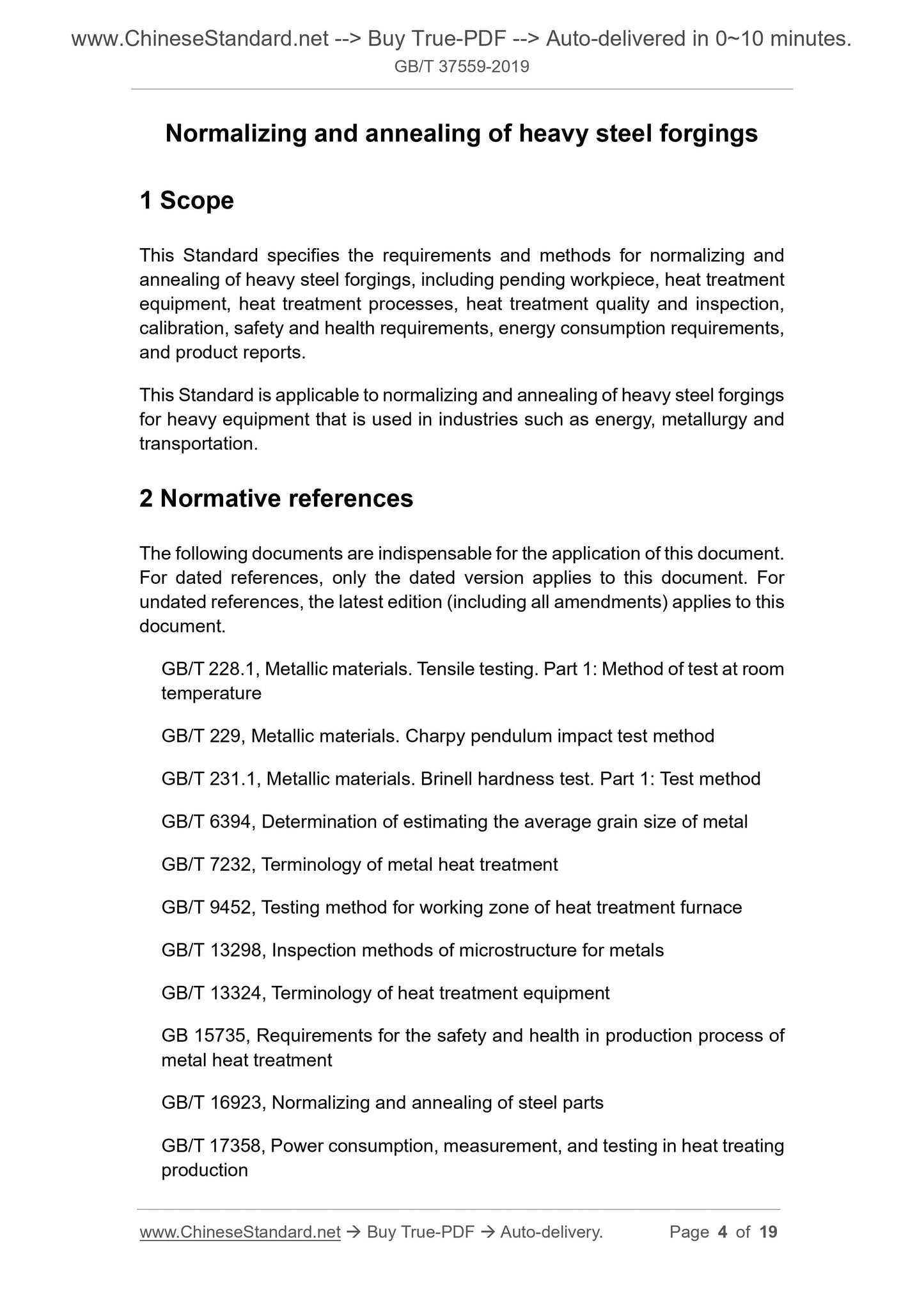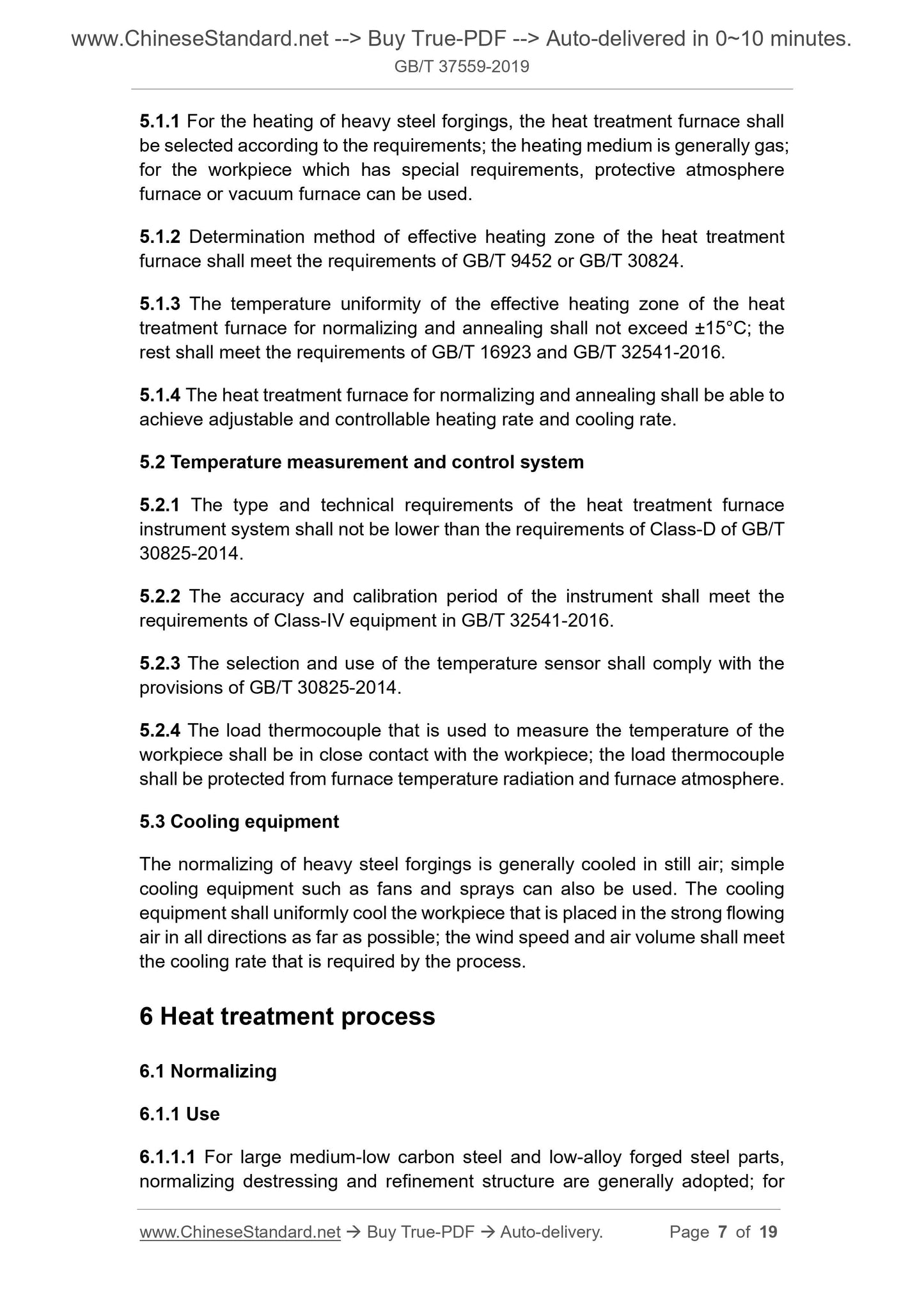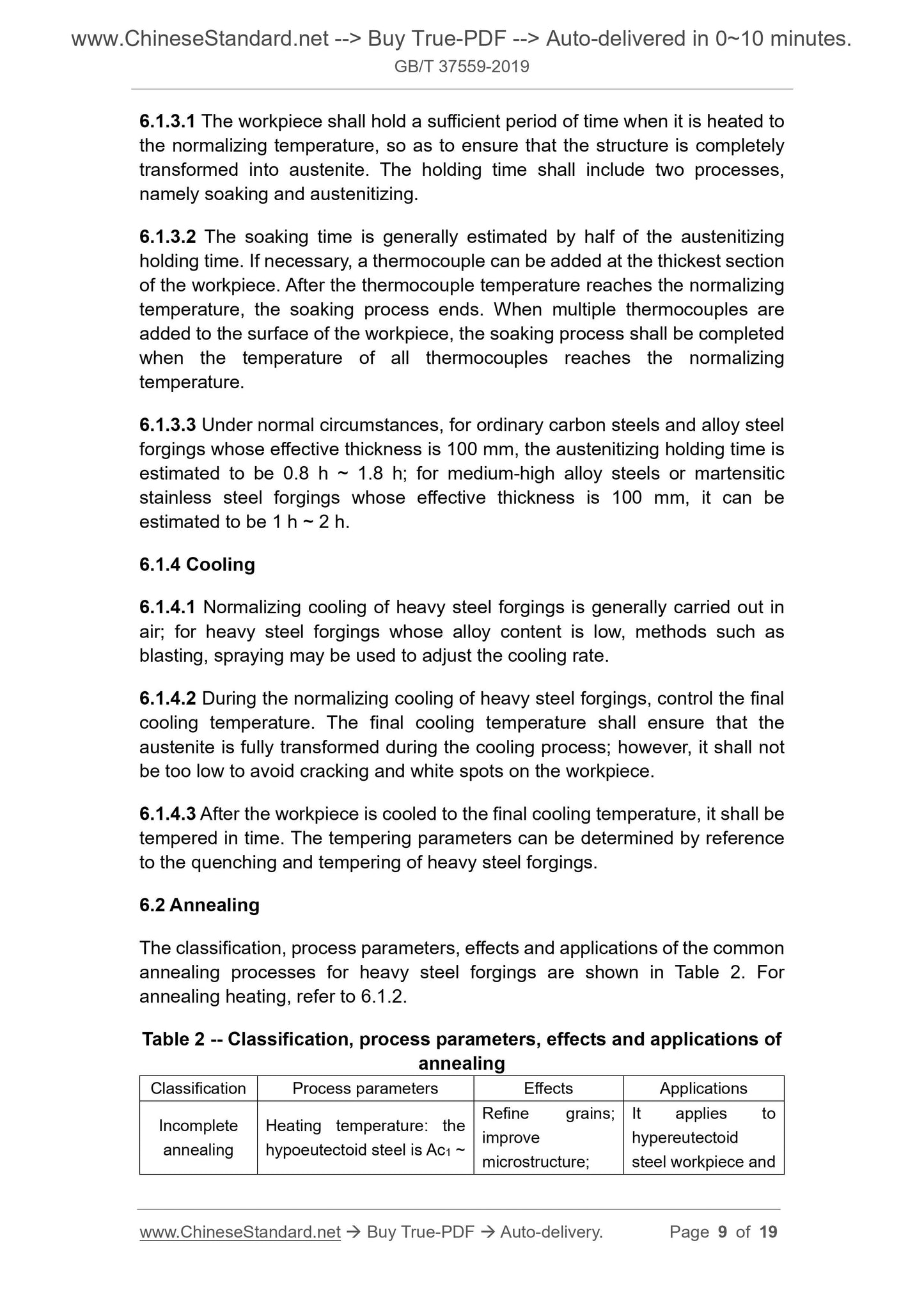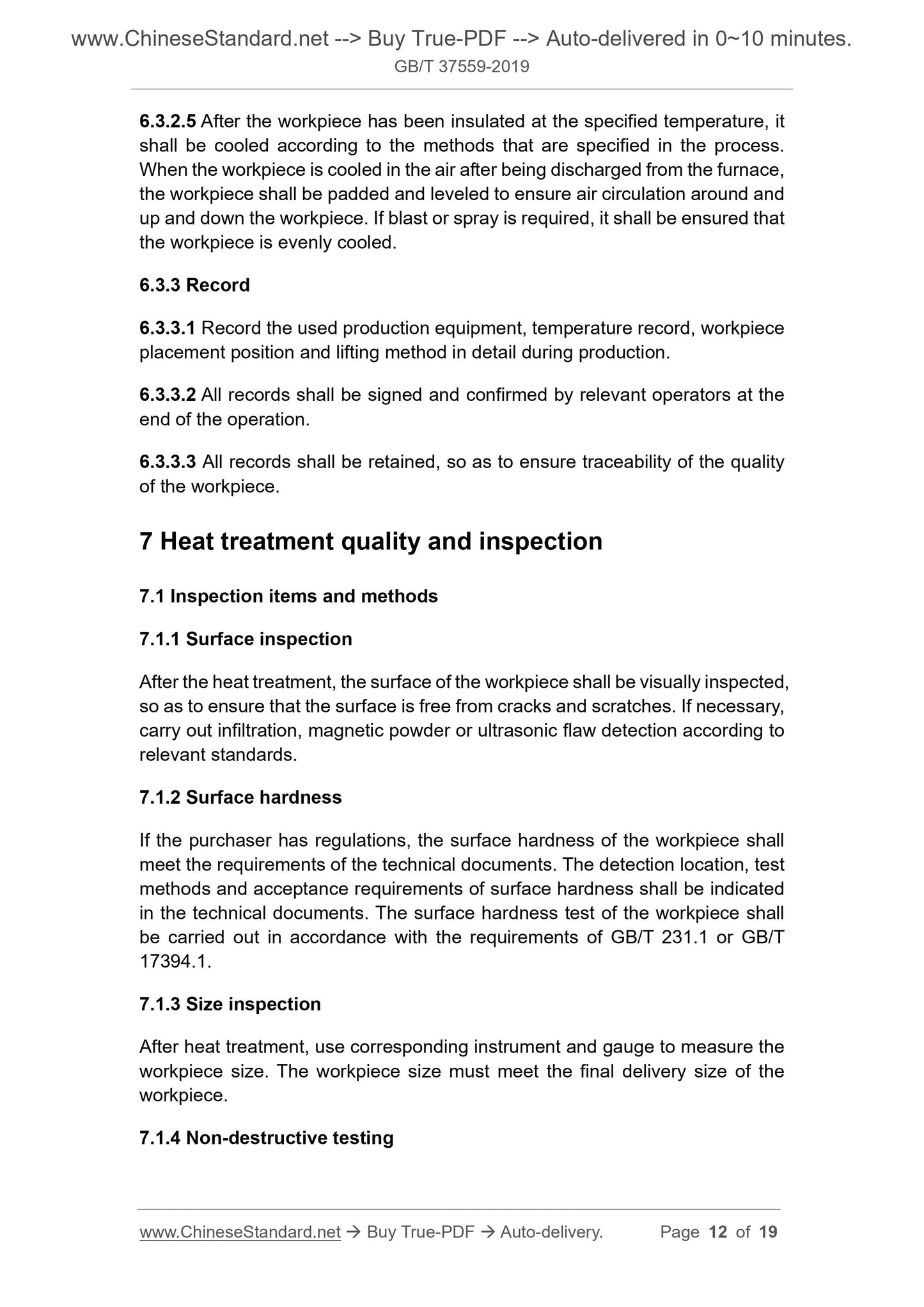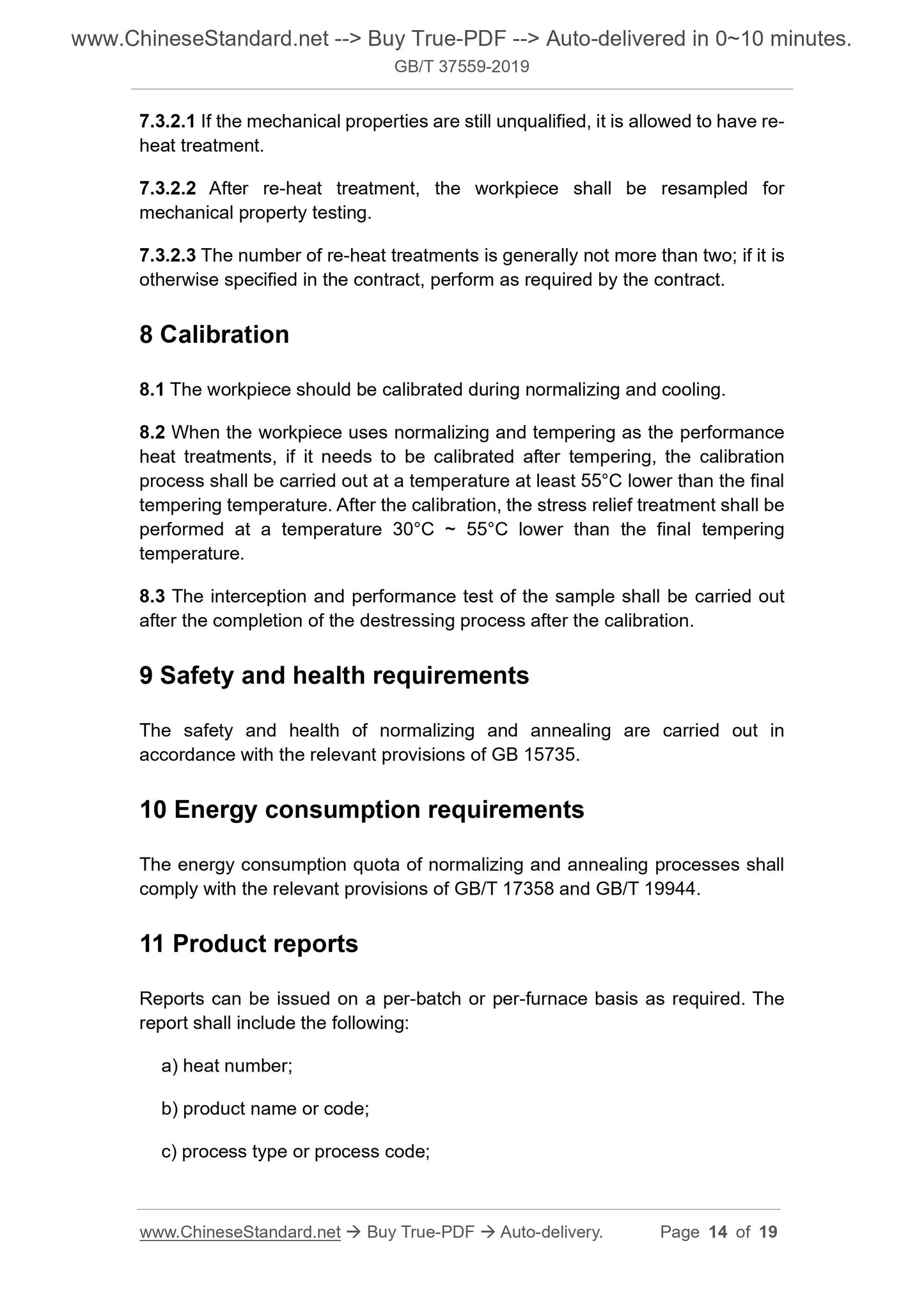1
/
of
7
www.ChineseStandard.us -- Field Test Asia Pte. Ltd.
GB/T 37559-2019 English PDF (GB/T37559-2019)
GB/T 37559-2019 English PDF (GB/T37559-2019)
Regular price
$150.00
Regular price
Sale price
$150.00
Unit price
/
per
Shipping calculated at checkout.
Couldn't load pickup availability
GB/T 37559-2019: Normalizing and annealing of heavy steel forgings
Delivery: 9 seconds. Download (and Email) true-PDF + Invoice.Get Quotation: Click GB/T 37559-2019 (Self-service in 1-minute)
Newer / historical versions: GB/T 37559-2019
Preview True-PDF
Scope
This Standard specifies the requirements and methods for normalizing andannealing of heavy steel forgings, including pending workpiece, heat treatment
equipment, heat treatment processes, heat treatment quality and inspection,
calibration, safety and health requirements, energy consumption requirements,
and product reports.
This Standard is applicable to normalizing and annealing of heavy steel forgings
for heavy equipment that is used in industries such as energy, metallurgy and
transportation.
Basic Data
| Standard ID | GB/T 37559-2019 (GB/T37559-2019) |
| Description (Translated English) | Normalizing and annealing of heavy steel forgings |
| Sector / Industry | National Standard (Recommended) |
| Classification of Chinese Standard | J36 |
| Classification of International Standard | 25.200 |
| Word Count Estimation | 14,120 |
| Date of Issue | 2019-06-04 |
| Date of Implementation | 2020-01-01 |
| Issuing agency(ies) | State Administration for Market Regulation, China National Standardization Administration |
Share
